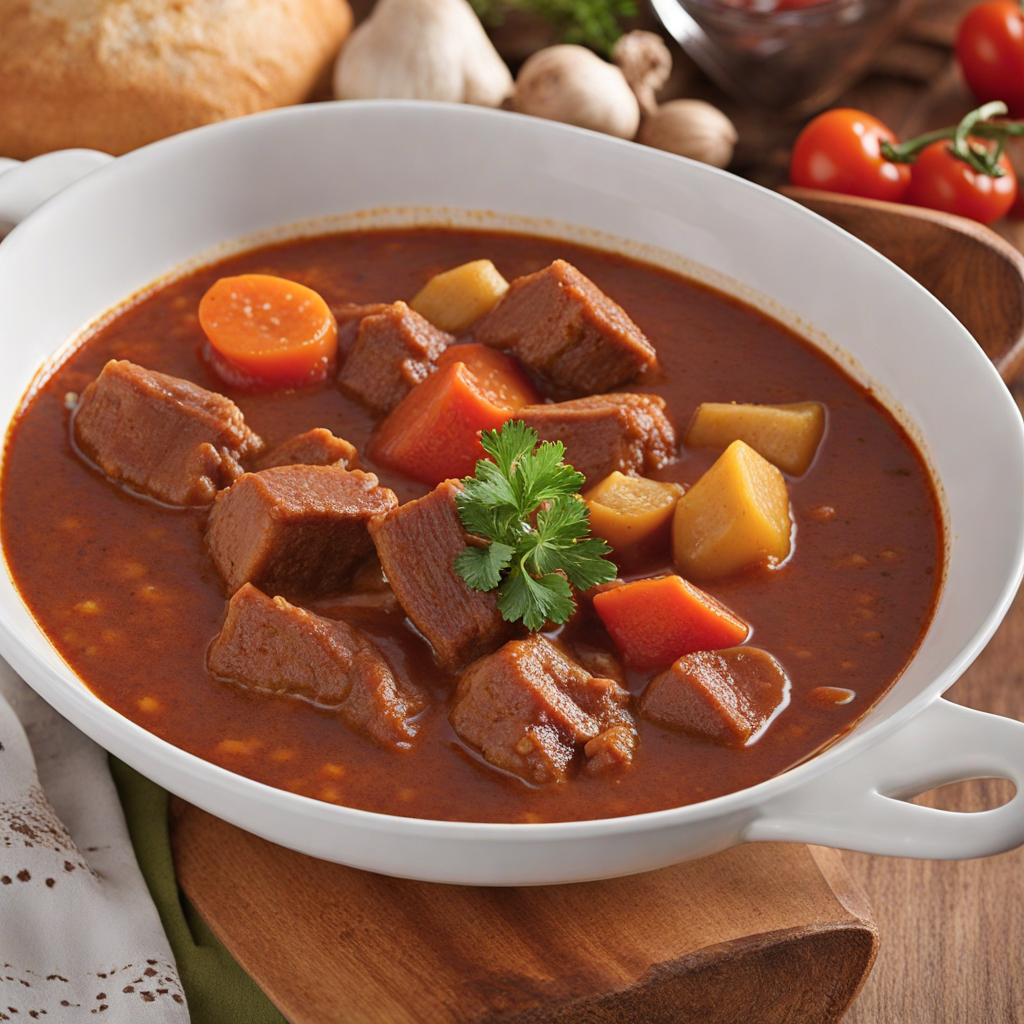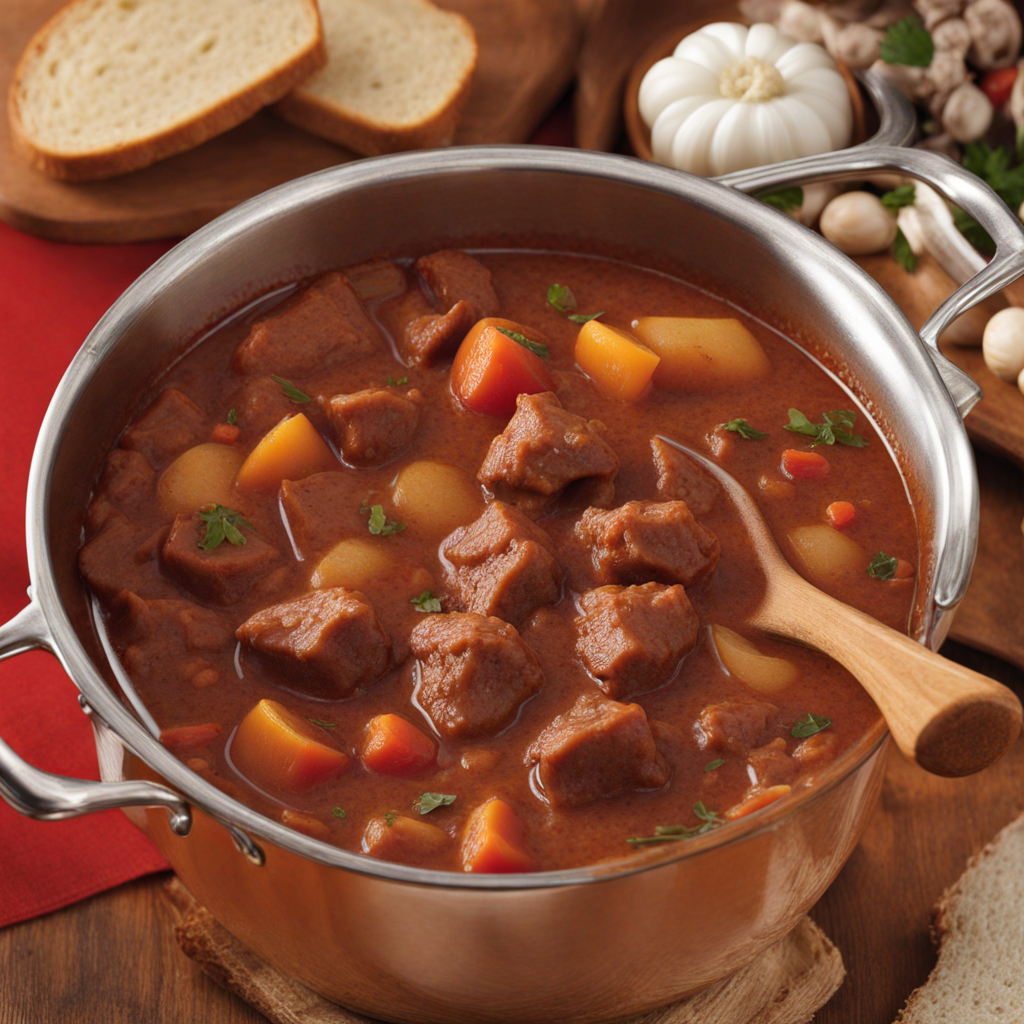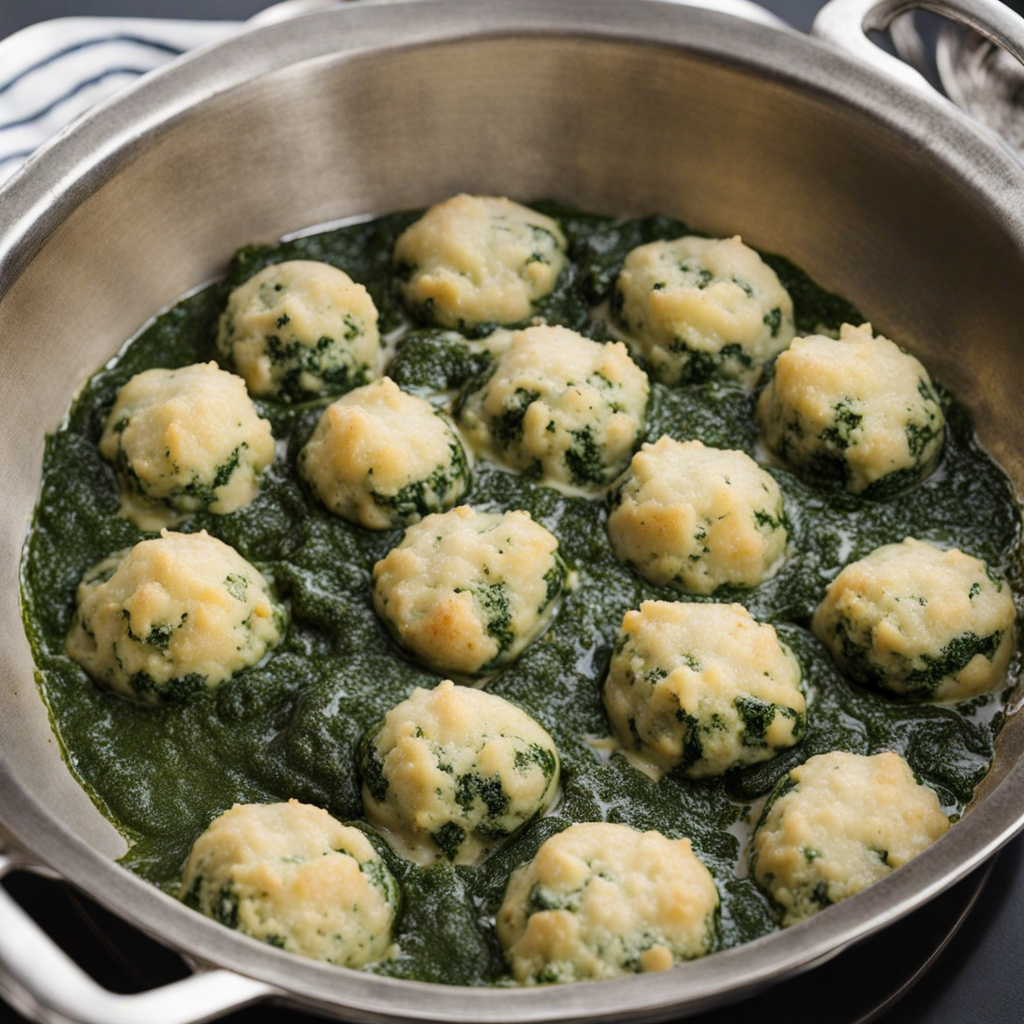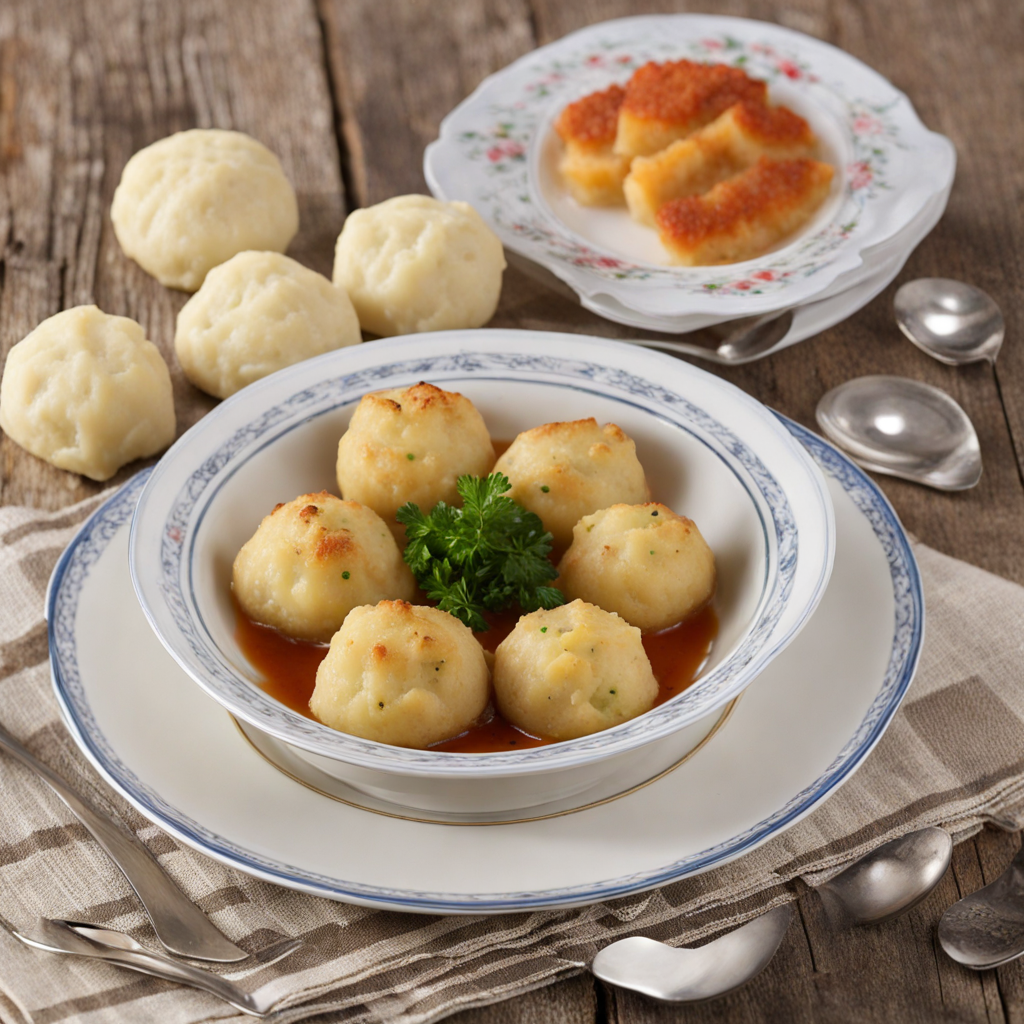Gulasch
Gulasch, a hearty dish that originated from Hungary but has found a beloved place in Austrian cuisine, is a rich and flavorful stew typically made with beef, onions, and a variety of spices. The key to a perfect gulasch lies in its slow cooking process, allowing the flavors to meld beautifully over time. The beef is often cut into bite-sized chunks and seared to develop a deep, caramelized crust, which adds depth to the dish. Onions play a crucial role, as they are sautéed until golden, contributing to the sweetness and complexity of the stew. Traditional gulasch is often seasoned with paprika, giving it a warm, earthy flavor that sets the foundation for this comforting meal. In addition to the main ingredients, gulasch can incorporate a variety of vegetables such as bell peppers, tomatoes, and potatoes, which not only enhance the texture but also complement the robust flavors. Each region in Austria may have its own unique twist on gulasch, with some variations featuring different types of meat, such as pork or game, and others introducing local herbs and spices. The stew is typically served piping hot, often accompanied by a side of fresh bread, dumplings, or noodles, making it a filling and satisfying option for any meal. What truly makes gulasch special is its versatility; it can be enjoyed as a rustic family dinner or elevated for a more refined dining experience. The dish is perfect for gatherings, as it can be prepared in large batches and allows the spices to deepen in flavor, making leftovers even more delightful. The combination of tender meat, aromatic spices, and a luscious sauce creates a symphony of tastes that invite you to savor each bite, making gulasch a must-try for those eager to explore the rich culinary heritage of Austria.
How It Became This Dish
The Rich Tapestry of Gulasch: A Culinary Journey through Austria’s History #### Origins Gulasch, known in its original form as gulyás, is a hearty stew that has become a staple of Austrian cuisine, but its roots trace back to Hungary, where it was first developed by cattle herdsmen in the 9th century. The term "gulyás" itself derives from the Hungarian word for a herdsman, "gulyás." These herdsmen would prepare a simple meat stew over an open fire, using beef, onions, and water, seasoned with whatever spices were at hand—primarily paprika, which was introduced to Hungary from the New World in the late 16th century. As the dish evolved, it traveled across borders, making its way into Austrian kitchens by the late 18th and early 19th centuries. The Austrians, influenced by their Hungarian neighbors and the Habsburg Empire's central role in European politics, embraced gulasch, adapting it to their own culinary traditions. #### Cultural Significance In Austria, gulasch is more than just a meal; it is a cultural symbol that embodies the nation’s historical ties to Hungary and the broader Austro-Hungarian Empire. The dish symbolizes comfort, community, and tradition. It has been served at family gatherings, celebrations, and public festivals, often accompanied by dumplings, bread, or potatoes. Gulasch is particularly popular during the colder months, providing warmth and sustenance, which makes it a favored dish during winter festivals and Christmas markets. The dish has also found its way into Austrian literature and art. References to gulasch can be found in works that celebrate the simple, hearty fare of the Austrian people. Its presence in cafes and homes reflects a deep-rooted tradition of sharing meals, fostering connections among families and communities. #### Development Over Time As gulasch made its way into Austrian cuisine, various adaptations emerged, reflecting regional preferences and ingredient availability. The Austrian version of gulasch is typically characterized by its thick, rich sauce, often incorporating ingredients like bell peppers, tomatoes, and sometimes even potatoes. The variations are numerous, with each region of Austria boasting its own take on the dish. 1. Wiener Gulasch: In Vienna, the capital city, a unique interpretation known as Wiener Gulasch developed. This version often includes a greater emphasis on the use of onions, which are sautéed until golden before the meat is added. The addition of a splash of wine or vinegar in the cooking process gives this gulasch a slightly tangy flavor profile. 2. Ungarisches Gulasch: This dish pays homage to its Hungarian roots. It is typically more paprika-forward, showcasing the spice's vibrant red color and rich flavor. It is commonly made with beef, though variations using pork or lamb can also be found. 3. Szegediner Gulasch: Named after the Hungarian city of Szeged, this version introduces sauerkraut into the mix, creating a delightful contrast between the rich meat and the tangy fermented cabbage. It is a great example of how ingredients can evoke regional flavors and preferences. 4. Fischgulasch: Another fascinating interpretation is the fish gulasch, which uses freshwater fish like pike or trout, showcasing the diversity of gulasch across Austria. This variant is typically lighter and often highlights fresh herbs. 5. Vegetarian Gulasch: In response to evolving dietary preferences, vegetarian gulasch has emerged, utilizing hearty vegetables, legumes, and spices to create a satisfying stew that aligns with modern sensibilities while still honoring the spirit of the original dish. #### The Cooking Process The preparation of gulasch is a labor of love that reflects the importance of patience in cooking. Traditionally, the meat is cut into large chunks and seared in a heavy pot. Onions are added next, sautéed until translucent, and then the paprika is incorporated. This step is crucial, as it releases the spice's essential oils and flavors. The dish is then simmered slowly, allowing the meat to become tender and the flavors to meld beautifully. Cooking gulasch is often viewed as a communal activity, where family members gather in the kitchen, sharing stories and laughter as they prepare the meal together. This communal aspect of cooking enhances the cultural significance of gulasch; it is not merely about the food but about the connections formed through the shared experience of preparing and enjoying the dish. #### Gulasch in Modern Austria In contemporary Austria, gulasch remains a beloved dish, frequently appearing on menus in traditional inns and modern restaurants alike. Its adaptability allows chefs to experiment with new ingredients and techniques while still honoring the dish’s heritage. Food festivals often celebrate gulasch, with competitions showcasing regional variations, drawing locals and tourists alike who come to sample various interpretations of this iconic dish. Moreover, gulasch has transcended the boundaries of Austria and Hungary, finding its way into international cuisine. It is not uncommon to find gulasch served in restaurants around the world, each chef bringing their unique twist to the dish. This global appreciation reflects the universal appeal of comfort food that resonates deeply with people regardless of their cultural background. #### Conclusion Gulasch is not just a dish; it is a narrative woven through the fabric of Austrian history, culture, and culinary evolution. Its journey from the steppes of Hungary to the heart of Austria encapsulates the shared histories of nations and peoples. Each bowl of gulasch tells a story—of herdsmen, of the Habsburg Empire, of family gatherings, and of modern adaptations. As Austria continues to embrace and celebrate its culinary heritage, gulasch stands as a testament to the enduring power of food to connect us all across time and space. Through every spoonful, we partake in a rich history that binds the past with the present, nourishing not just our bodies but also our shared human experience.
You may like
Discover local flavors from Austria







